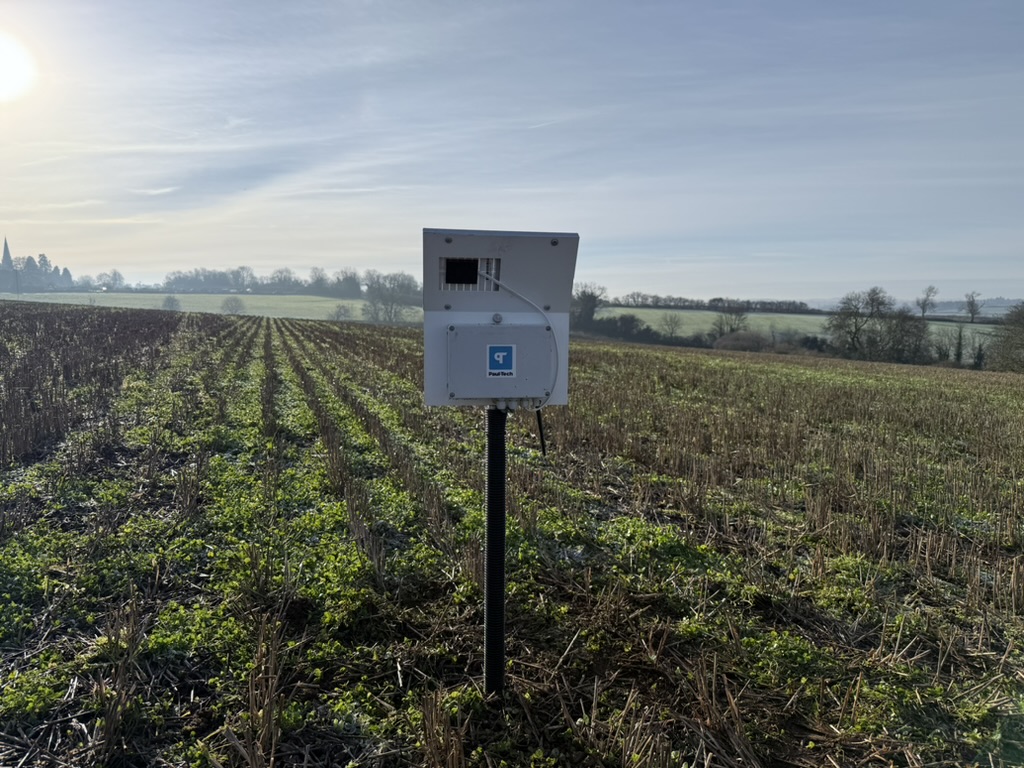
Soil monitoring is the foundation of successful farming, as it helps farmers understand soil health in real-time. It affects everything from nutrient availability and water retention to crop yields and long-term sustainability. Yet, many farmers still rely on periodic soil tests, which provide only a snapshot of conditions at a single point in time. But what if you could see exactly how your soil is changing—every day, throughout the growing season?
Continuous soil monitoring gives farmers real-time insights into nutrient levels, temperature, and moisture, enabling smarter decision-making, optimised resource use, and improved yields. But how does it work, and why is it becoming an essential tool for modern agriculture?
Baseline Nutrient Levels: The Foundation of Smart Fertilisation
Before plants start actively growing, it’s crucial to understand the baseline nutrient levels in the soil. The baseline indicates the amount of plant-available nutrients in the soil without mobile nitrogen compounds (nitrate nitrogen, NO3-N), giving a more accurate picture of long-term nutrient reserves.
With this data, farmers can:
- Adjust fertilisation plans to match actual soil needs
- Minimise over-fertilisation, reducing costs and environmental impact
- Improve nutrient efficiency for better crop performance
Instead of guessing, farmers can now fine-tune their fertiliser applications based on real-time soil data—maximising both sustainability and yield potential.
Tracking Nutrient Dynamics with Real-Time Soil Monitoring
Nutrient availability isn’t static—it changes throughout the season as plants absorb key elements and as external conditions shift. Tracking nutrient reserves at different depths provides valuable insights into leaching and nutrient movement within the soil profile.
One of the most critical nutrients to monitor is nitrogen. Since it moves quickly through the soil, farmers need to ensure that nitrogen is available when plants need it—before it leaches into lower layers and becomes inaccessible.
With continuous data collection, farmers can:
- Understand how and when plants absorb nutrients
- Optimise organic and synthetic fertiliser applications
- Reduce nitrogen losses, improving both farm profitability and environmental sustainability
Soil Temperature & Moisture: Critical Factors in Fieldwork Planning
Timing is everything in farming. Knowing the real-time soil temperature and moisture levels allows farmers to plan fieldwork at the most optimal times, reducing risks and improving efficiency.
Sowing at the Right Time: Soil temperature signals the beginning of the growing season. Sowing too early can expose seeds to frost, while delaying can shorten the growing period and impact yield potential.
Fieldwork Readiness: Moisture levels determine when soil is suitable for tillage and machinery operations. This is especially crucial for heavier clay soils, where the ideal moisture range for tillage is very narrow.
Overwintering Insights: Freeze-thaw cycles impact soil structure and crop survival. Monitoring winter soil conditions helps farmers anticipate risks and adjust their spring planning accordingly.
With continuous monitoring, farmers don’t have to rely on outdated weather models or guesswork—they have real-time data to make informed decisions.
A Season-Long Overview of Soil and Crop Conditions
Having access to soil data throughout the entire growing season gives farmers a powerful advantage. Instead of reacting to problems after they occur, they can take proactive measures to optimise plant health and yield.
Understanding Nutrient Availability: See exactly when fertiliser nutrients become available to plants and how they move through the soil.
Maximising Crop Health: Ensure crops receive the right nutrients at the right time for optimal growth.
Preventing Risks: Identify issues like nutrient deficiencies or excess moisture early, before they impact yield.
Effortless Access to Actionable Data
One common concern among farmers is whether continuous soil monitoring adds extra workload. The reality is the opposite—automated monitoring solutions collect and transmit data directly to an easy-to-use interface every few hours. No manual measurements. No guesswork. Just clear, actionable insights.
By leveraging real-time soil data, farmers can spend less time worrying about soil conditions and more time optimising their farm operations.
Make Data-Driven Decisions for a More Profitable Farm
Continuous soil monitoring isn’t just about data—it’s about making better farming decisions every day. Whether it’s optimising fertilisation, planning fieldwork, or mitigating risks, real-time insights give farmers the confidence to act.
Want to take the guesswork out of soil management? Paul-Tech’s soil monitoring solutions provide continuous, real-time data to help you make smarter decisions and improve your farm’s performance.